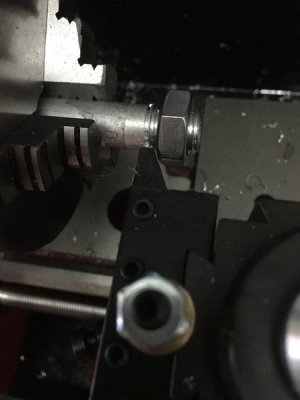To start off, I have a G0752 lathe but changing gears on that thing is a pain in the butt! So recently went out and purchased a HF 7x10 dedicated just for threading 1/2 x 20 adapters.
I followed Frank Hoose's instructions but I can't seem to get the 1/2 x 20 nut to screw on an aluminum test tube. I can do it on delrin but I am guessing because delrin is more forgiving. Looking to see if you guys can spot what I am doing wrong.
1. Set compound to 29 degrees
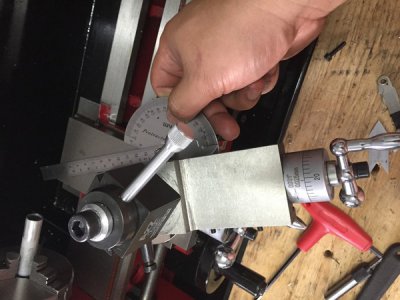
2. Use gauge to align 60 degree threading tool
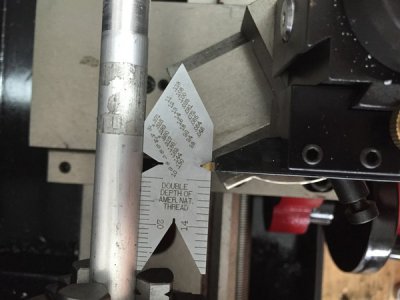
3. I am using the "leave half nut engaged method". In this case I aligned it with #3. According to the thread chart on the machine, I could use either 1,3,5 or 7
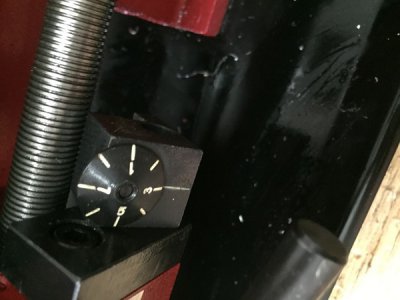
4. I made a first cut and zeroed the cross slide and compound.
5. Cut .005, 004, .003, .002 and then the rest either half of .001 or full .001 until thread pitch matches the thread pitch tool
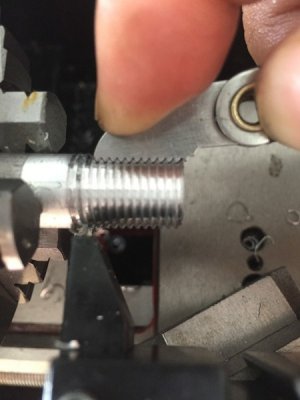
6. I made sure the diameter of the test tube is not too large for 1/2 x 20
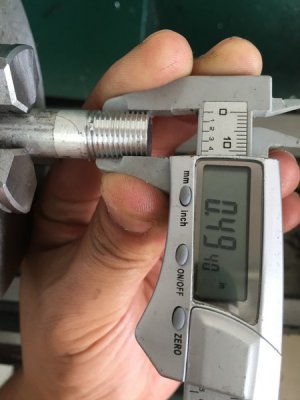
As mentioned above, delrin works fine.
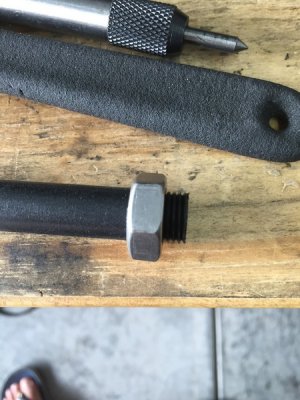
Does anything stand out to you guys?
I followed Frank Hoose's instructions but I can't seem to get the 1/2 x 20 nut to screw on an aluminum test tube. I can do it on delrin but I am guessing because delrin is more forgiving. Looking to see if you guys can spot what I am doing wrong.
1. Set compound to 29 degrees

2. Use gauge to align 60 degree threading tool

3. I am using the "leave half nut engaged method". In this case I aligned it with #3. According to the thread chart on the machine, I could use either 1,3,5 or 7

4. I made a first cut and zeroed the cross slide and compound.
5. Cut .005, 004, .003, .002 and then the rest either half of .001 or full .001 until thread pitch matches the thread pitch tool

6. I made sure the diameter of the test tube is not too large for 1/2 x 20

As mentioned above, delrin works fine.

Does anything stand out to you guys?


